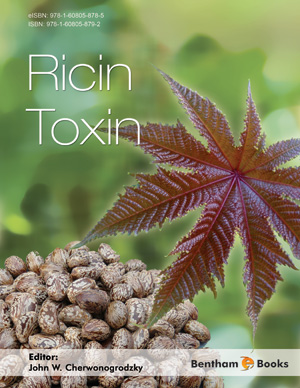Abstract
Ricin is a highly toxic globular protein (lectin) found in castor (Ricinus communis) seeds. Inhaled ricin dust or intravenously injected ricin is ~1000 times more toxic than orally ingested ricin. Interactions between ricin, soil minerals, and other materials control the environmental fate of dispersed ricin. Ricin was sorbed by the common soil clay minerals, montmorillonite (~350 g/kg), illite (~50 g/kg), and kaolinite (10 g/kg). Ricin also effectively sorbed to other soil materials: ferrihydite, goethite, calcite, and Ca-humate, but sorption by activated carbon was minimal. Montmorillonite sorbed 5 times more ricin at pH 5 than at pH 10. Much of the ricin sorbed at pH 7 could be desorbed using pH 10 buffer solutions. X-ray diffraction patterns showed that ricin sorption expanded montmorillonite interlayers and shifted the basal spacing from ~ 11.8 Å to ~21.2 Å. Textiles, fruit, and vegetables sorbed ricin, but much less ricin was sorbed than by soil materials. Breakthrough curves for ricin leached through soil columns indicate that dissolved ricin is strongly sorbed by soils and most readily moves in sandy soils. Ricin readily moved in the dust from sandy soils and was concentrated in the fine dust particles. Ricin less readily moved in clayey soil dust and was less effectively concentrated in the fine dust. Experiments using PM10 (< 10 μm) and PM2.5 (< 2.5 μm) dust samplers demonstrated that significant quantities of respirable-size ricin particles were generated in fine soil dust. Dust control chemicals, particularly polyacrylamide, reduced the generation of fine ricin dust particles.
Keywords: Ricin toxicity, ingestion routes, adsorption to solids, pH-dependent sorption, soils, clay mineralogy, textiles, fruits, vegetables, toxin mobility in water, movement in dust, and dust control agents.






















